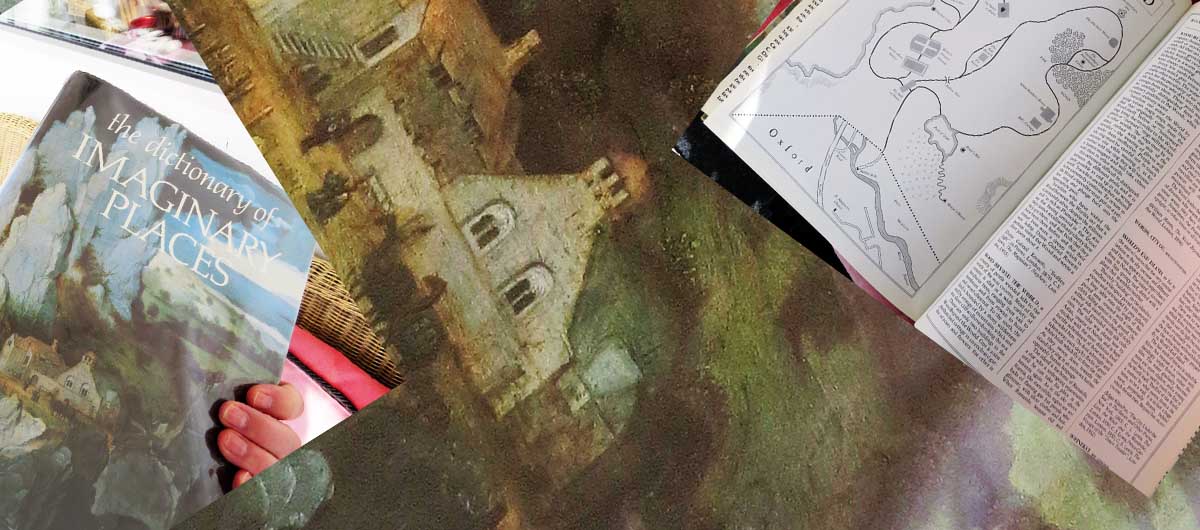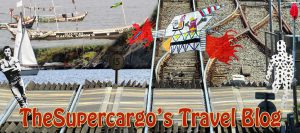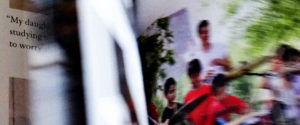Travelling is a pleasure I’ve been denied for a while now. You too maybe. There are a lot of us in this boat – but we aren’t going anywhere. Unless we’re travelling in the mind, visiting imaginary places.
Turning down a Facebook challenge
Mrs SC has recently taken up a challenge on Facebook to publish ten of her photos from 10 different places she’s visited. She’s complicating it for herself by choosing places and photos she hasn’t previously posted, and often photos that are not your typical touristy images (sun, sea, sights, selfies). She’s picking out odd structures, run-down back streets, markets, sculptures transformed by snow. It’s fun to look at the pictures she’s finding and remember. Some of the places we visited together, some not. I try to remember what I was doing while she was in Maputo or in Nordmalling.
Not being a great Facebook aficionado, I choose not to follow in her footsteps. (Though I suppose I could do the same exercise on Instagram or Twitter.)
Instead I read. Right now I’m spending half an hour or so every morning exploring coastal Main in the 1940s with Homer Wells and Melony, Candy and Wally, Nurses Edna and Angela, and Doctor Larch. I’m about half way through John Irving’s The Cider House Rules.
But I write about books in my reading diaries and, here in Stops and Stories, I’m trying to write about travel and the stories I come across on the way.
There’s not a lot of way at present.
Odd maps and stranger atlases
When I started Stops and Stories, I thought I’d also publish an occasional post about maps and atlases. Odd maps and stranger atlases. I’ve done so from time to time. Witness Strange Maps and Cartographic Curiosities (which was about a website that collects these things). Or Particular Smells, about Kate McLean’s sensory maps.
My post about Judith Schalinsky’s Pocket Atlas of Remote Islands has been one of my consistently popular. (Which is why there’s a link to it in the right-hand column. Below if you’re viewing this on a mobile phone.) But I haven’t written about maps for a while, though I’ve had Rebecca Solnit’s city atlases lined up to write about – San Fransico, New Orleans, New York. Maybe later.
This morning, though, while I was doing my morning exercises and thinking, as one does, about the day to come, my eye caught on the spine of The Dictionary of Imaginary Places.
It’s on my desk now as I write, open. It’s big and takes up a lot of space and I can’t find my reading glasses, which turn out to be underneath. None the worse for it, thank goodness.
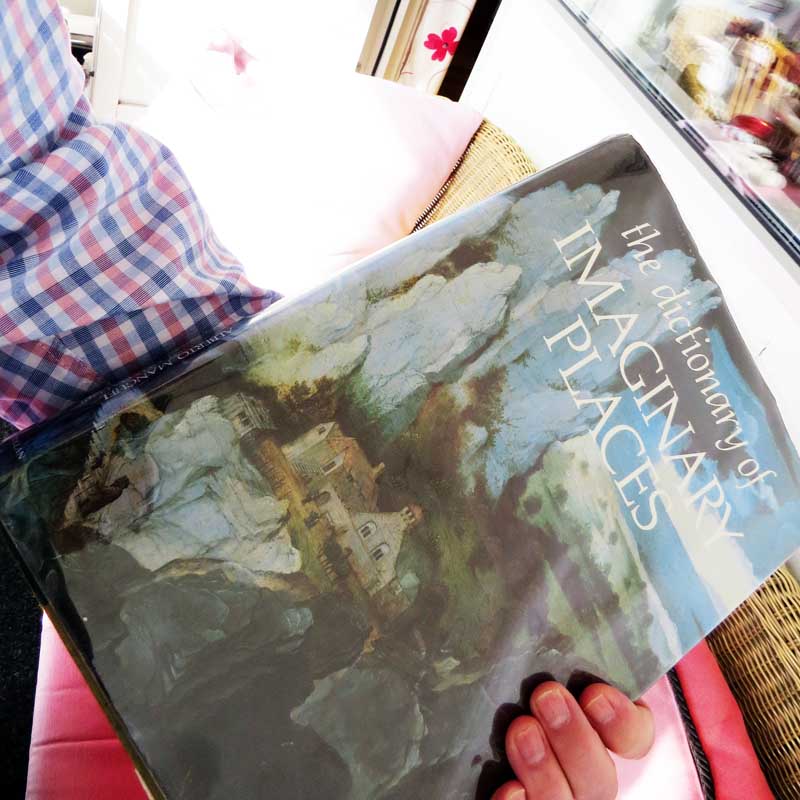
Visiting imaginary places
I’m trying to remember where and when I bought it. It was a second-hand buy, I’m sure of that. Mostly because its dust-jacket is carefully wrapped in plastic film. Only my books bought from quality second-hand shops are wrapped like that. Also I’ve just come across a complements slip tucked inside as a bookmark. From Andy and Angela Richards at Cold Tonnage Books. That’s a bit of a give-away.
Opening it at random the first entry I find is CRUSOE’S ISLAND or SPERANZA (sometimes called ISLAND OF DESPAIR). Immediately across from that is: CUFFYCOAT’S ISLAND, about one hundred miles to the north of New Guinea, covered with dense forests. The fauna includes flying squirrels, kangaroos, and mermaids …that live on the coast in underwater houses of coral. … Though the mermaids attempt to keep up with western fashion, they find the task extremely difficult as the humidity quickly ruins their garments.
Imaginary Places is a great book for dipping into. I suppose it could be read cover to cover, but I’ve never even attempted that. I have it on my shelves and sometimes I take it out and open it up and happily drop down the rabbit hole. (See the entry on WONDERLAND.)
Meticulous references
Of course, one could go travelling around imaginary places by reading the original books. All the entries in Imaginary Places are meticulously referenced. It would be possible to read an entry and then track down the book referred to in a library or on-line. But many of the references are to books in French, Italian or German which places them a bit beyond my reach.
But I would guess the majority of the reference texts are in English, or available in English translation. In that sense Imaginary Places is a good jumping off point. But if you treat it purely as a reference work, you miss a lot of the fun. The authors, Alberto Manguel and Gianni Guadalupi, have chosen to present the material in the form of a gazetteer or traveller’s directory from the 19th century. The entries are all composed as if the imaginary places they describe are real. As if the reports were made by reliable eyewitnesses.
Take the entry on Wonderland, for example. Imaginary Places assures us that: Access is gained through a rabbit-hole possibly located on the banks of the Thames between Folly Bridge and Godstow, Oxford. … Several places in Wonderland are worth a visit: the White Rabbit’s dainty cottage, the Duchess’ house with its spicy though somewhat neglected kitchen, the Mad Hatter’s outdoor tea-room, open all hours. There’s even a nicely drawn map which includes The Cheshire Cat’s Tree and The Caterpillar’s Information Centre.
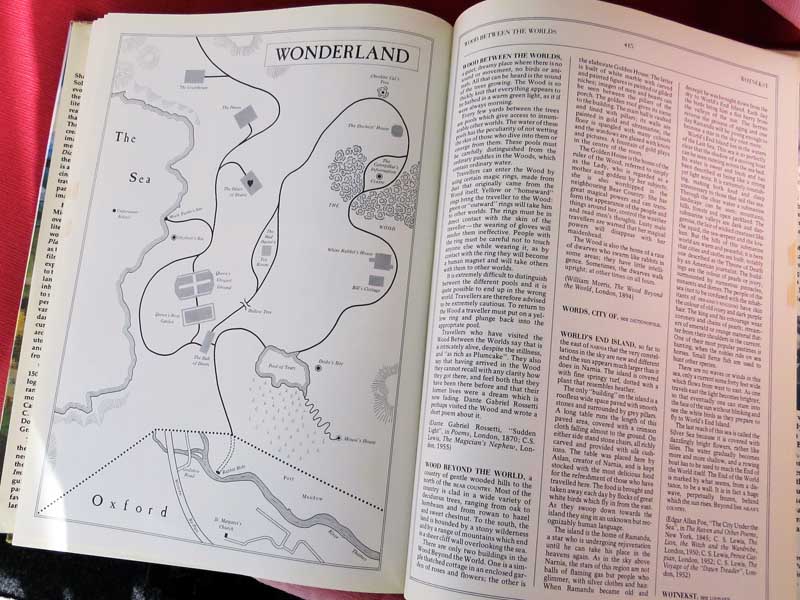
The realms of fantasy
The more you’ve travelled in the realms of fantasy (up to about 1980), the more you come across places and references that are familiar. Apart from Wonderland and Crusoe’s island, you can visit Earthsea, Mordor, Narnia, Lilliput, Oz and Utopia. But George RR Martin’s Westeros does not appear. Off-world destinations from Science Fiction are also excluded. It’s a flexible exclusion. As I recall, Narnia involved travel though space (in The Magician’s Nephew) and Earthsea is surely in a parallel universe.
But although there are places I’d like to see included (Rice Burrough’s Mars for example), what I miss is more than balanced by the huge number of less familiar (to me) references to fantasies in other languages than English. The mermaids mentioned above turn out to come from a French novel from 1923, André Lichtenberger’s Pickles ou récits à la mode anglaise.
Meanwhile: Naturalists will find the the fauna of Erikraudebyg of great interest. Mammoths abound, as well as huge bears, larger than polar bears and the colour of the grizzly. (ERIKRAUDEBYG)
On the islands of LUQUEBARALIDEAUX the inhabitants are a species of andouille, or pork sausage, which grows to be twelve inches tall… they tend to move around in strings … they drink mustard from the streams which flow through the islands …
And in OO-OH, the Wieroos dress in … fine woven cloth. The colour of their robes indicates their place in the social hierarchy, a position which is determined by the number of murders they have committed.
(That last comes from a couple of books by Edgar Rice Burroughs which did make the cut. The Land that Time Forgot being one. I only know of that from the film.)
Just now, imaginary places are pretty much the only places you can visit. You won’t run the risk of being infected and you don’t need to provide proof of inoculation to enter. I suppose there are a lot of people exploring the imaginary spaces in video games, but who needs video games when you have books?

